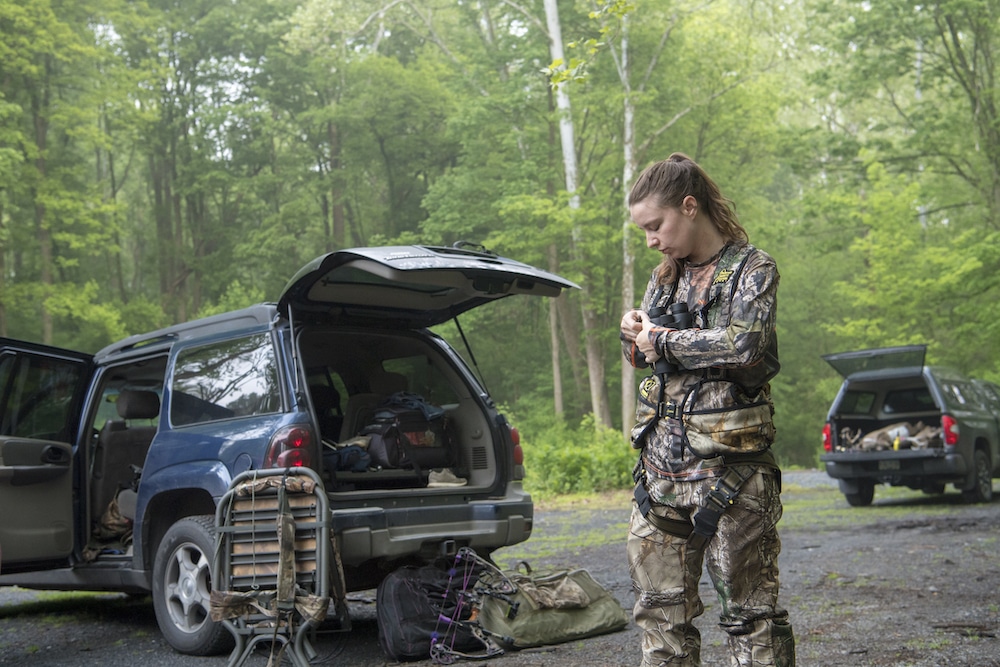You’ve put in unsuccessfully for years, trying to draw a tag for your dream hunt. When you finally get that coveted tag in hand, make sure your hunt gets off to a smooth start. You’ve got to get there first. Learn all you need to know about flying with archery equipment well in advance of your flight.
If you do your homework and you’re proactive about complying with regulations, you shouldn’t have any trouble flying with archery gear. Most airlines permit you to fly with a bow and arrows, but it’s a good idea to call your airline for specific information and to learn if there are any size restrictions on your bow case.

Make sure you check the guidelines before you fly. Photo Credit: John Hafner
According to Transportation Security Administration guidelines, your bow, arrows and hunting knives must be checked; they can’t be part of your carry-on baggage. There are no specific regulations requiring releases to be checked, but be aware that most airport security officials are unfamiliar with archery equipment and may mistake your release for a firearm part, given that it has a trigger, or even brass knuckles, depending on the release style. It’s best to keep it in checked baggage.
Because they don’t encounter archery equipment every day, some security agents may not know the rules as well as you do. Expect delays and have your facts in order to help the process go smoothly. Print out a copy of TSA regulations on archery equipment and carry it with you for added insurance.

Packing your bow properly will help assure it won’t be damaged when you retrieve it after the flight. Photo Credit: ATA
Packing your bow properly not only helps things go smoothly at the airport, but it also protects your equipment. TSA regulations don’t require your bow to be in a hard-sided case, but using one is an excellent idea because baggage is often handled roughly. The only reason you might consider using a soft case is if your final destination involves flying in a bush plane where weight is a factor.
Your case must be locked. Most bowhunters buy a TSA-approved lock. TSA agents have universal keys that can open these locks. Your case will almost certainly be opened and inspected, and if you don’t have a TSA lock and aren’t there to open the case yourself, the lock could be cut. If you don’t want agents to access your case in your absence, ask if an agent can examine the case right at the ticket counter while you supervise, or wait to go through security until you’re sure your case has been inspected. Keep your key on your person at all times. Once inspected, your case should move through baggage without a hitch.
Pack your bow case to protect your gear. Use tie-down straps to secure your bow within the case. Stuff hunting clothes or other soft material around your bow, particularly around delicate sights. You may even consider wrapping your sights with foam or bubble wrap. Arrows should be stored securely in the case’s foam slits or in a separate arrow tube stored within the case. Broadheads should be removed from arrows and stored in a hard container inside the bow case. Also, package your hunting knife in a sheath or hard container and store it inside the case.
On the day of your flight, arrive at the airport well before your departure time in case you run into hassles. Most airlines charge fees for checked bags (and even more for oversized bags, which may apply to your bow case). One alternative is to ship your bow prior to your flight. You won’t have to deal with airport hassles, but you probably won’t save much money, either, and you still run the risk that your bow doesn’t make it to your destination. Plus, you’ll have to forgo a few days of shooting practice.
When you reach your final destination, with any luck, your bow case will pop up into the baggage claim area as expected, but don’t be alarmed if you don’t see it right away. Sometimes large bags, or those that may be considered weapons, have to be picked up at the baggage claim office with a photo ID.
Flying internationally with a bow usually isn’t a problem, but some countries may restrict it, so check in advance. It’s a good idea to fill out Form 4457, Certificate of Registration for Personal Effects Taken Abroad, ahead of time. That proves you owned the bow while in the United States, shielding you from paying tariffs upon your return. Carry your hunting license or archery organization membership card as well. Agents in other countries may not understand hunting and could think you are using your bow as a weapon. Having this paperwork on you makes you look more legitimate.
Here are some resources for further information:
TSA Provides Travel Tips for Hunting Season
TSA Travel Tips Tuesday: TSA Recognized Locks
https://www.tsa.gov/blog/2014/02/18/tsa-travel-tips-tuesday-tsa-recognized-locks
Form 4457 – Certificate of Registration for Personal Effects Taken Abroad
https://www.cbp.gov/document/forms/form-4457-certificate-registration-personal-effects-taken-abroad
How to Travel with Archery Equipment
https://www.completeguidetoarchery.com/how-to-travel-with-archery-equipment/
Here’s a guide for flying internationally with archery equipment and some regulations by country:
http://www.airline-baggage-fees.com/sports/archery-equipment-bow-and-arrow/